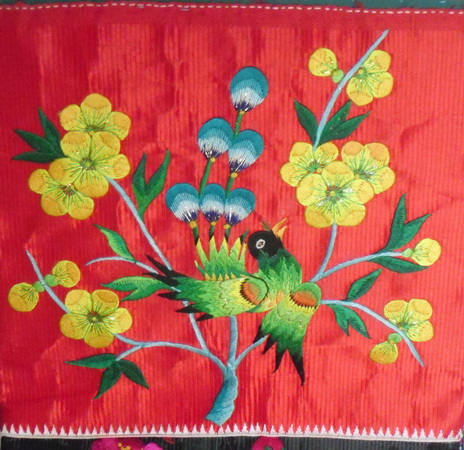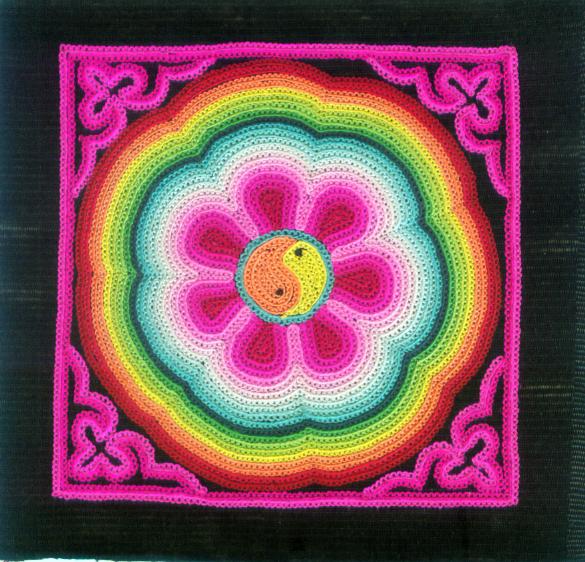Origin |
||
 |
Since the opening of the “Silk Road” and the continuous pouring of silks in Zhongyuan area from the Qin and Han Dynasty, embroideries have been used into many aspects of life, like decorating themselves, beautifying lives, conveying friendship and basing hopes, this folk art, therefore, became an indispensible part of people's daily life and have been handed down from one generation to another, and it is growing on and on. | |
| The coiled embroidery of the Tu Nationality is a form of Tu embroidery. According to the archaeological findings, in Dulan County of Haixi Mongolian-Tibetan Autonomous Prefecture in Qinghai province, similar coiled embroideries were found in the excavated tombs of the Tu ancestors Tuyuhun. It was inferred that the coiled embroidery arts and crafts could be dated back to the 4th century AD. | ||
In the succeeding thousands years, the coiled embroidery arts has been growing with the Tu nationality, handed down from one generation to another, and becoming better and perfect, to some extent, it can be said to grow as the development of ethnic costumes, and to grow into a new stage because of the unique local marriage customs. In the ancient marriage customs of the Tu nationality, a ceremony named “embroidery show” was held to fulfill the friends and relatives' appreciation of the brides’ coiled embroidery techniques. The brilliant embroidery highly appraised would make the husband's family feel great honored to have such an ingenious daughter-in-law. During the marriage rite, of the bride, all the headwear, clothing, footwear, ornaments and the other need to be set on the tables of both the wife's family and husband's family—this “dowry show” really was a micro-garments exhibition. |
 |
|
| The coiled embroidery of the Tu Nationality has acquired multiple values such as folklore and aesthetics in its thousand-year development. | ||
| Dexterous hands |
||||||
| embroidering wonderful arts | ||||||
